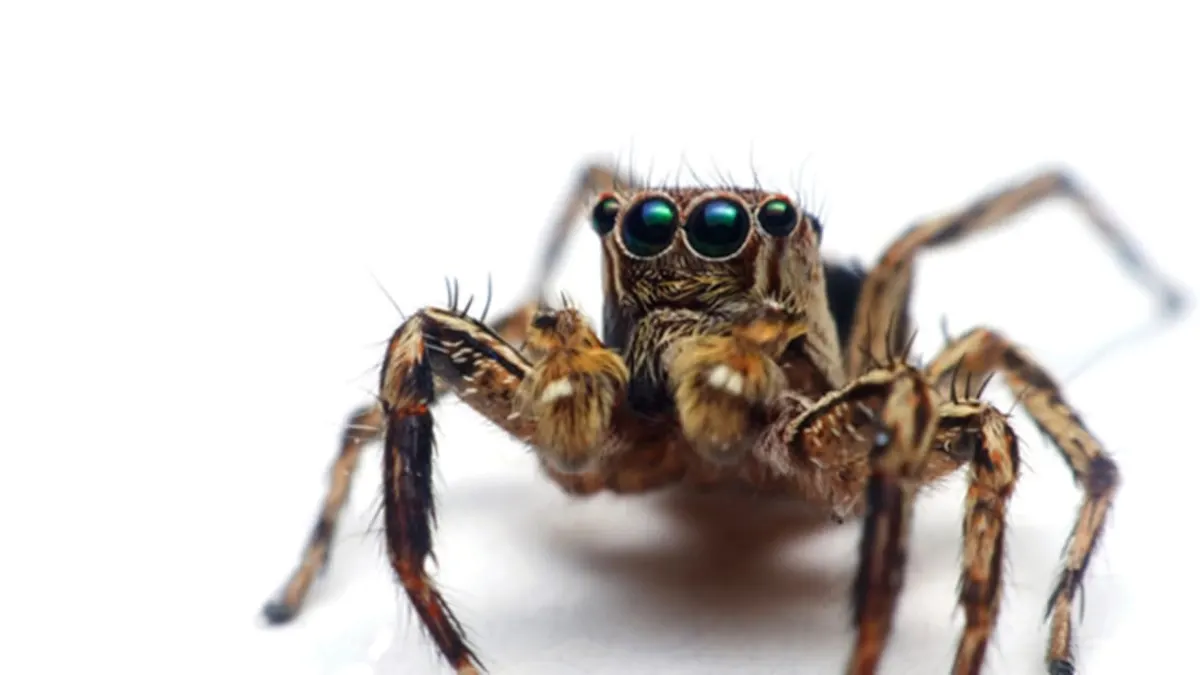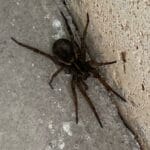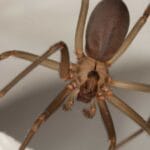Spider Proximity: Truth or Urban Legend?
Have you ever heard the chilling claim that you’re always within six feet of a spider? This persistent myth has been freaking people out for years. But is there any truth to it? Let’s untangle this web of fear and uncover the facts about spider proximity.
Are There More Spiders If I Find Them? Unpacking the Facts and Easing Your Arachnophobia
You find a spider in your home. It’s enough to make anyone wonder, “Are more lurking nearby?”. Don’t worry; you’re not alone! Let’s debunk some common myths and separate spider facts from fiction.
Firstly, that saying about always being six feet away from a spider? That’s a classic case of a joke gone wrong, stemming from an arachnologist’s playful comment. The truth? While spiders are widespread, they’re not strategically positioned to give us the creeps. They gravitate toward areas offering food and shelter. So, a home teeming with insects might attract more eight-legged tenants.
Remember, finding one spider doesn’t automatically signal an infestation. It’s more like a neighborly encounter – it happens!
However, while on the subject of our eight-legged friends, let’s acknowledge their role as natural pest control agents. They’re the unsung heroes keeping pesky insect populations in check! Instead of panicking at the sight of one, perhaps we can appreciate them for the behind-the-scenes work they do.
So, the next time you encounter a spider, remember, it’s probably just passing through, searching for a snack or a quiet corner. And if sharing your space isn’t your cup of tea, there are always humane ways to encourage them to move along.
How Many Spiders Are In a Square Meter? Unpacking the Facts & Debunking Myths
We’ve all heard the myth about constantly being three feet from a spider. Turns out, it’s not that straightforward. Spider populations vary dramatically depending on location.
Let’s dive into the truth behind this creepy crawly claim. A spider expert named Rod Crawford, who works at the Burke Museum, says it really all boils down to environment. It makes sense if you think about it – a lush forest will naturally have a denser spider population than, say, a barren desert. Spiders need a food source, primarily insects, so more bugs equal more spiders.
Now, for the million-dollar question – how many spiders are in a typical square meter? Research suggests the average is about 131. However, depending on the specific environment, that number could be as low as three or as high as a spine-tingling 384.
Remember, while they might make your skin crawl, spiders play a vital role in keeping those pesky insect populations under control.
Unearthing the Look of Spiders: Anatomy, Diversity, and Debunking Myths
What exactly makes a spider a spider? How do you distinguish them from their insect counterparts? Let’s explore the captivating world of spider anatomy and debunk some common myths along the way.
Body Basics: More Than Meets the Eye
At first glance, a spider might seem like just another bug. But look closer – their bodies are uniquely structured, divided into two main sections.
The first, the cephalothorax, is a fusion of the head and chest, housing the spider’s brain, eyes, and powerful mouthparts (more on those later). The abdomen, the second section, is where digestion occurs and, more notably, where you’ll find the spinnerets. These silk-producing glands are responsible for creating those intricate webs we often encounter (and sometimes walk into!).
Eight Legs and Other Amazing Features
Unlike insects with their six legs, spiders boast an extra pair, always attached to the cephalothorax. These legs are multi-functional – used for walking, weaving webs, sensing vibrations, climbing, and even swimming in some species.
And then there are the eyes – usually eight, but the number and arrangement vary between species. Some spiders have exceptionally keen eyesight, while others rely more on their other senses.
Their mouthparts, called chelicerae, are equipped with fangs used to inject venom into their prey. Don’t worry, though; only a tiny fraction of spider species pose a danger to humans.
A World of Spiders: Size, Color, and Camouflage
The spider world is a fascinating tapestry of diversity, with over 40,000 known species! They come in a dazzling array of colors, patterns, shapes, and sizes. Some sport vibrant hues to attract mates, while others are masters of camouflage, blending seamlessly into their surroundings. Size also varies dramatically, ranging from minuscule jumping spiders to the massive Goliath birdeater, a gentle giant and the largest spider in the world.
Unraveling the Web of Myths
Let’s address some common misconceptions:
- The “Always Within Three Feet” Myth: This myth likely stemmed from a misconstrued comment by arachnologist Norman Platnick. In reality, spider proximity depends entirely on the environment. A lush forest will undoubtedly have a denser spider population than a concrete jungle.
- All Spiders Spin Webs: False! While webs are iconic, many spiders are active hunters and don’t rely on webs for prey capture. Wolf spiders, for example, chase down their quarry.
- All Spiders Are Dangerous: Another myth! While most spiders possess venom, the vast majority are harmless to humans. Their venom is primarily for subduing prey, and only a small percentage possess venom that poses a medical threat to us.
Unveiling the Arachnid Blueprint: What Are the Defining Features of a Spider?
Spiders. Master architects, skilled hunters, and essential players in our ecosystem. But what exactly defines a spider? Let’s delve into their unique characteristics and explore the fascinating features that set them apart.
Beyond Eight Legs: An In-Depth Look at Spider Anatomy
One of the most obvious features that distinguishes spiders from insects is their eight legs, always attached to the cephalothorax, the fused head and chest segment. But there’s more to spider anatomy than meets the eye. Their bodies are divided into two main sections:
- Cephalothorax: This front section houses the spider’s brain, eyes, mouthparts (including the chelicerae with their venom-injecting fangs), pedipalps (sensory organs also used in mating), and, of course, those eight legs.
- Abdomen: This rear section is home to the spinnerets, the silk-producing organs that allow spiders to create their remarkable webs. The abdomen also houses the respiratory system (book lungs or tracheae) and the reproductive organs.
Spider Superpowers: Silk, Venom, and Sensory Perception
- Silk Production: Spiders are renowned for their silk-spinning abilities. Their silk, stronger than steel by weight, is used for a variety of purposes – building webs for prey capture, creating egg sacs to protect their young, constructing shelters, and even “ballooning,” using silk strands to disperse through the air.
- Venom: While the thought of spider venom might send shivers down your spine, it’s important to remember that most spiders pose no threat to humans. Their venom is primarily designed to subdue prey, and only a small fraction of species have venom potent enough to cause us harm.
- Sensory Systems: Spiders possess an array of senses that help them navigate their world and hunt effectively. Hair-like structures called setae are highly sensitive to vibrations, air currents, and even changes in air pressure. These sensory hairs alert spiders to the presence of prey or predators. Vision varies greatly between species; some, like jumping spiders, have exceptional eyesight, while others rely more on their other heightened senses.
Debunking the Myths: Separating Fact from Fiction
Some persistent myths about spiders continue to circulate:
- The “Always Within Three Feet” Myth: This often-repeated claim is a misinterpretation of a statement by arachnologist Norman Platnick. The reality is that spider density depends heavily on the environment. You’re more likely to be within three feet of a spider in a biodiverse forest than in a sterile urban environment.
- All Spiders Build Webs: While webs are a defining characteristic of many spider species, not all spiders rely on this method for catching prey. Some, like wolf spiders, are active hunters, relying on speed and agility to chase down their meals.
Spiders: Unsung Heroes of the Ecosystem
Spiders, often misunderstood and feared, play a vital role in maintaining a balanced ecosystem. They are incredibly efficient natural pest control agents, consuming massive amounts of insects annually. By reducing insect populations, spiders contribute significantly to the health of our gardens, crops, and overall environment.
A Final Word: Appreciation, Not Fear
The next time you encounter a spider, take a moment to appreciate its intricate features, remarkable adaptations, and essential role in the natural world. Remember, spiders are more fascinating than fearsome, and their presence is a sign of a healthy, biodiverse environment.
Did you know that one named singer who starred in moonstruck? Check out the link for more details. Have you ever wondered what are the zodiac signs of serial killers? Click on the link to find more about it.
Let me know if you’d like me to expand on any of these sections or provide additional insights.
- Unraveling Einstein’s Legacy: Who Inherited His Genius? - July 14, 2025
- Unlock Einstein’s Family Tree: Bernhard Caesar & Untold Stories - July 14, 2025
- Unveiling Bernhard Caesar Einstein: His Life & Albert Einstein’s Legacy - July 14, 2025
















